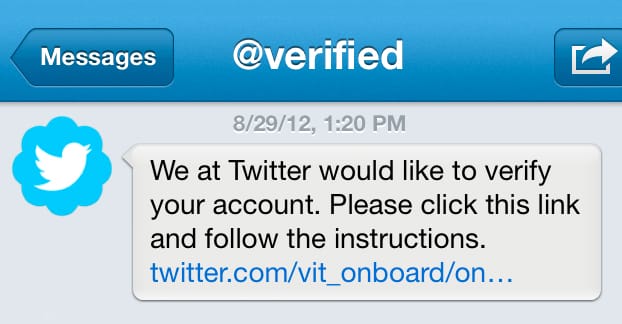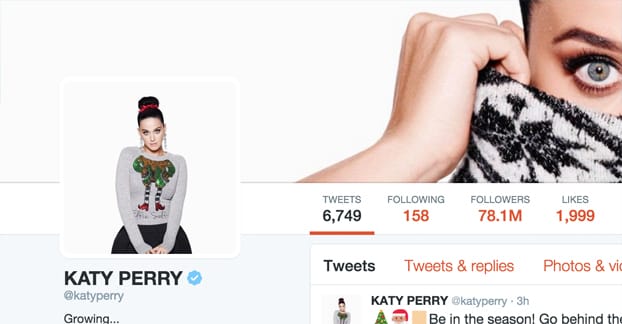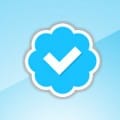Verification is a great little tool on social media to use to boost your reputation, even if it’s a minor boost. People tend to trust a verified profile more than one without the fancy blue checkmark. Why? It’s an exclusive club. It takes something special to earn the check, and not everyone can get it.
The Benefits of Twitter Verification
What’s the big deal about a little blue icon by your name, anyways? Some people seem to love it, but others don’t really use it one way or the other. Some businesses that are global brands online don’t have verification, while some no-name entities in entertainment have it. If it’s so haphazard, how valuable can it be? What does it get you?
1: Analytics Access. Twitter analytics are available to anyone who can become an advertiser. This is a limited list; there are geographic restrictions on it, and some people may have been blacklisted. Others don’t have the budget and don’t want to go through the process just to get analytics. Others only use Twitter sporadically, and don’t have the activity necessary to earn access. However, if Twitter decides to verify your profile, you immediately bypass all those other requirements and earn access to analytics instantly.
2: Trust. Verification is a notice from on high, Twitter itself reaching down from the administrative heavens to sanction your account. They’re telling the world that, yes, you are who you claim to be. This can be very valuable in a few situations.
- When there’s a parody account for your business. I’ve seen plenty of parody accounts that take the name and logo of the business and then post humorous tweets. A couple of old examples are the United Airlanes and the Food Netwerk accounts, both of which were hilarious, but potentially bad for branding. A more recent example might be the Customer Service account on Facebook that keeps trolling people complaining about gay people in advertising and other such social justice decisions.
- When there’s an actual malicious impersonator of your business. These people are actively trying to harm you in some way, whether it’s stealing your traffic and directing it to a competing site, or just phishing for user information with a fake copy of your site. It’s not enough to just report the account and get it removed; nothing guarantees another won’t come right back. Verification helps your users identify the real you.
- Your username was taken before you registered for the site, so you have to send people to a strange variation. It might just be a common brand word that someone else is using for a personal account, or it might have been registered and left idle in an attempt to solicit payment from you for it later. In any case, you haven’t been successful in reclaiming the username, so you have to use something less sensible and somehow refer people to your actual account. Verification helps guide people that direction.
What if you’re not the kind of person someone would want to impersonate? What if your business is too small to be the target of phishing? Well, for one thing, you’re not. Anyone can impersonate anyone or phish anyone at any time. You’re not safe for being low-profile; you’re just less visible and more likely to slip under the radar. Why do you hear about Target having their credit card readers hacked, but not the thousands of active gas pump card skimmers every year? Because when 50 people are compromised it’s not a big deal, but with 50,000 are it becomes national news.
Being low profile doesn’t mean you can go without security and hope you’re overlooked. You wouldn’t want to use a super generic password any more than you would want to give your information to a scammer. Verification is worth pursuing at any level of prestige. Speaking of prestige…
3: Prestige. For some people, verification is a goal in and of itself. It’s prestigious because it’s relatively rare. Though, frankly, it’s not all that great. Once you see some of the people who have verification – and some who don’t – you might change your mind about this as well.
How Verification Happens
If you become eligible for verification, you will receive a tweet from a specific account, named @verified. This account is a legitimate Twitter account created and used solely for this process. Always make sure before you send any information that the account is the right one! You don’t want to accidentally send your username and password to @verrified or @verif1ed or any other dumb little variation used for phishing.
@Verified will send you a link, which will lead to a test. This test is much like the Hunger Games, in that it is in fact a test. It has nothing else in common though. It’s all about how to be a good tweeter, and it’s very easy assuming you’ve actually paid attention to Twitter in the time you’ve used it.
Once you pass the test, you are asked to input your phone number. This is the only piece of information Twitter will ask of you, so if the account is asking for username and password or anything else, you should probably report it as a phishing attempt. Once you give them your phone number, they will use it for two-factor authentication and validation of your identity. That’s it. You’re verified once they get your number and make sure it’s really you.
Oh, and you can actually lose verification. You can lose verification if you change your username, so make sure if you’re looking to rebrand, you’re either in contact with Twitter staff or you’re willing to lose the check. You can also lose verification if you set your tweets to protected. If you do something worth a ban, that eats your verification status as well.All of this regulates and maintains the value of verification.
Who Gets Verified?
Twitter, like Facebook and other social networks, only verifies certain types of accounts. These include “highly sought users in music, acting, fashion, government, politics, religion, journalism, media, sports, business and other key interest areas.” They also take a moment to specifically note that follower count and tweet count have no effect. The number one factor is one you can’t see or measure; the number of people who search for you. This is good, because:
- @KatyPerry has 78.1 million followers and, being a musician, is verified.
- @Lord_Voldemort7 has 2.11 million followers and, being a parody account, is not verified.
- @SevenFootWave has 1,408 followers and, being a small local band from California, apparently managed to get verification.
- @Sockington has 1.33 million followers and, being a cat, does not have verification.
- @DaBackWudz has 170 followers and is a rap group that hasn’t tweeted since 2011, and only recently lost verification this year.
So, as you can see, follower count really doesn’t have a lot to do with verification. Activity seems to, though, simply because the one trait most verified accounts have in common is activity.
Twitter also gives this advice:
- The Twitter accounts you request verification for must be connected to a company domain email address.
- The account must be actively tweeting and have a complete profile, including the user’s real name, bio, photo and a URL link.
You can read more here, at the source of those quotes.
The Verification Fast Track
So, how can you put yourself on the path to verification quickly and easily? There’s a lot of advice out there, so what I’m going to do is compile what other people have said and then help you determine how valuable it is to do.
Have an Agent
This is how most celebrities get verified before they’ve even really started using the site. Of course, celebrities have a lot going for them in the first place. If you have a company to manage your Twitter presence for you, they might have connections that can help you get verification. If you’re just a high profile CEO or entrepreneur running your social presence yourself, you’ll maybe need to look up an agency who can make the call for you. Of course, this could be an expensive route.
Go the Buzzfeed Route
A while back, Buzzfeed and Twitter made a deal. Twitter offered verification not just to the main Buzzfeed Twitter account, but also to the personal accounts of the high level employees working for the company. So, uh, that’s a valid technique, I guess. Just go out and get a job at a company that happens to be high profile enough to get that kind of deal, and also make sure your position with the company is high enough level to be considered for the verification program. It works, but it’s far from a convenient option.
Dress the Part
. By acting the way Twitter wants you to act as a verified user, you can stand out in your circles and attract the attention of the verification fairy. Some pieces of advice come from Twitter directly, while others are offered by people who have used them to be verified themselves.
- Follow other verified users. By becoming part of a social circle with the verified, you become a persona that they know, recognize, and trust. Earning retweets and messages from people who have verification makes you stand out from amongst all the rest of the people who follow those users. That attention helps you earn verification.
- Put the Twitter button on your website. Twitter has recently decided to change the design of the Twitter buttons, and to remove the tweet count from the tweet button, so this is a prime chance to implement the new designs and be ahead of the pack with site compatibility. Twitter likes it when you’re proactive with their tools, and no, that’s not a euphemism.
- Network directly with Twitter executives. Mandy, the editor for xoJane, had a connection with Biz Stone and sent him an email directly asking for verification. It worked. Howard Stern got the hookup for his head of security live on his show, because he was interviewing Biz at the time. Now, I’m not saying Biz should be your target. There are a bunch of other former and current executives that can help you, so take a look at who you might know through a few degrees of separation.
- Become a valued advertiser. There are some rumors that paying a bunch of money to Twitter through advertising can earn you verification. It makes sense; Twitter wants to up the security on any account that spends a reasonable amount of money, because they don’t want to lose that customer. They also don’t want to risk annoying their customers by causing them an inconvenience. Of course, this is just a rumor. I’m sure there are people who have spent quite a bit on advertising and don’t have verification for themselves. Still, advertising has other benefits, so it might be worth taking a look.
- Be obsessed enough with the verification process that you track down people involved in it and send them messages directly asking how you might be able to be verified, or what it takes. Learn as much about the process as you can beforehand so you can make some educated questions, and hope that the people in charge verify you just to get you out of their hair. At least, that’s what Lance Ulanoff did for Mashable.
- Get your fans to ask for it. By getting enough people to tweet at @verified, you can gain their attention and have them review your account. You won’t get verified if you don’t meet their standards and criteria, but if you do, you have a pretty good chance of being tossed a bone just because you were noticed.
- Get verified on other social networks. While Facebook, Twitter, Instagram, and all the rest don’t necessarily share data, you can certainly have a positive impact on one by linking to another. Facebook and Twitter have the ability to link directly via app, and that link proves you are who you say you are on the other site. If your Facebook profile is verified, you can try to leverage that verification to earn verification on Twitter. Of course, you still need to be in the right place at the right time and get the attention of the right people.
And, of course, the best method of all: using Twitter appropriately, staying within the terms of service, and mechanically meeting all of the requirements. Tweet a lot – several times a day is ideal – and make sure your tweets aren’t spam and aren’t nothing but marketing. Build up a following via organic marketing, paid marketing, cross-site marketing and other legitimate techniques. Buy followers for more engagement, but avoid bot followers. Purge fake followers and “egg” accounts on a regular basis. Make sure your profile is filled out with your name, bio, company link, and picture, the way Twitter likes it.
One thing you should never do is attempt verification “hacks” like this one suggested by Buzzfeed. The Twitter layout no longer allows you to do this specific hack, which is good. Any exploit or hack you try to use – up to and including photoshopping the verification checkmark on external media you use in an attempt to mimic or pretend to be verified – is liable to get you banned from Twitter entirely.
At the end of the day, being an active, valuable member of your community with some position of authority as a high ranking business member, entertainer, speaker, or other public entity is all it takes. Everything else is just ways for you to try to get an in with @verified.






I am Marquez a NFL player for the Chicago Bears I feel like I fit the credentials and I should be verified on Twitter thank you!